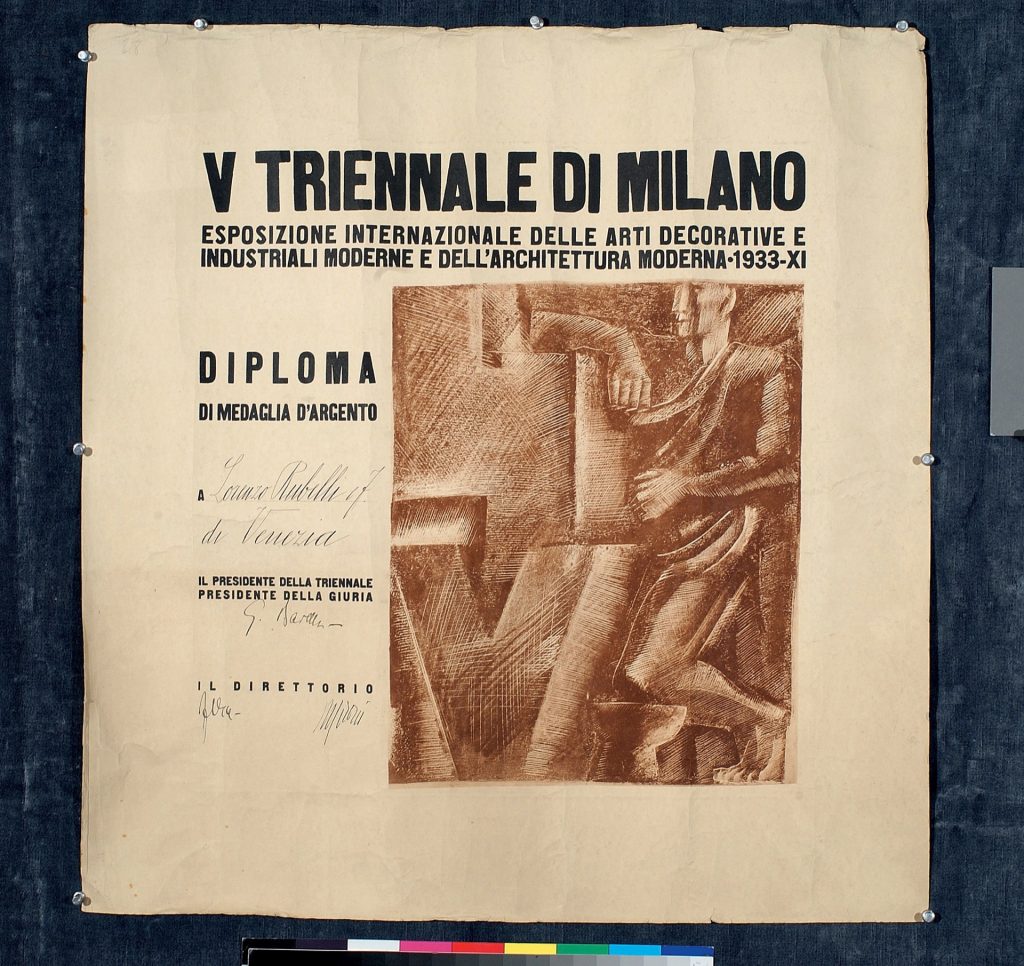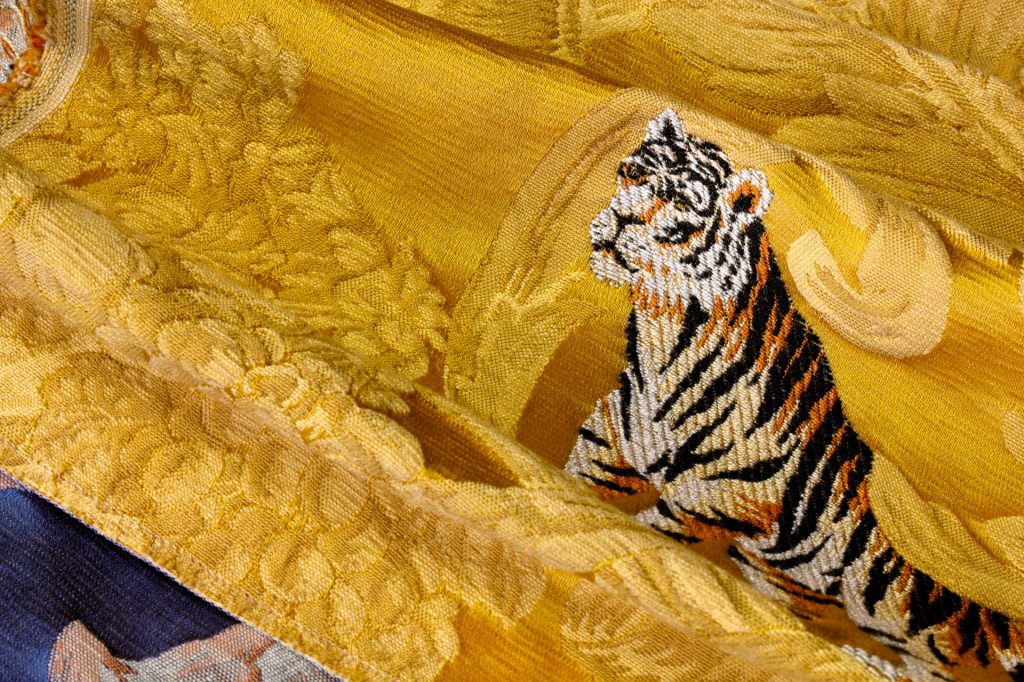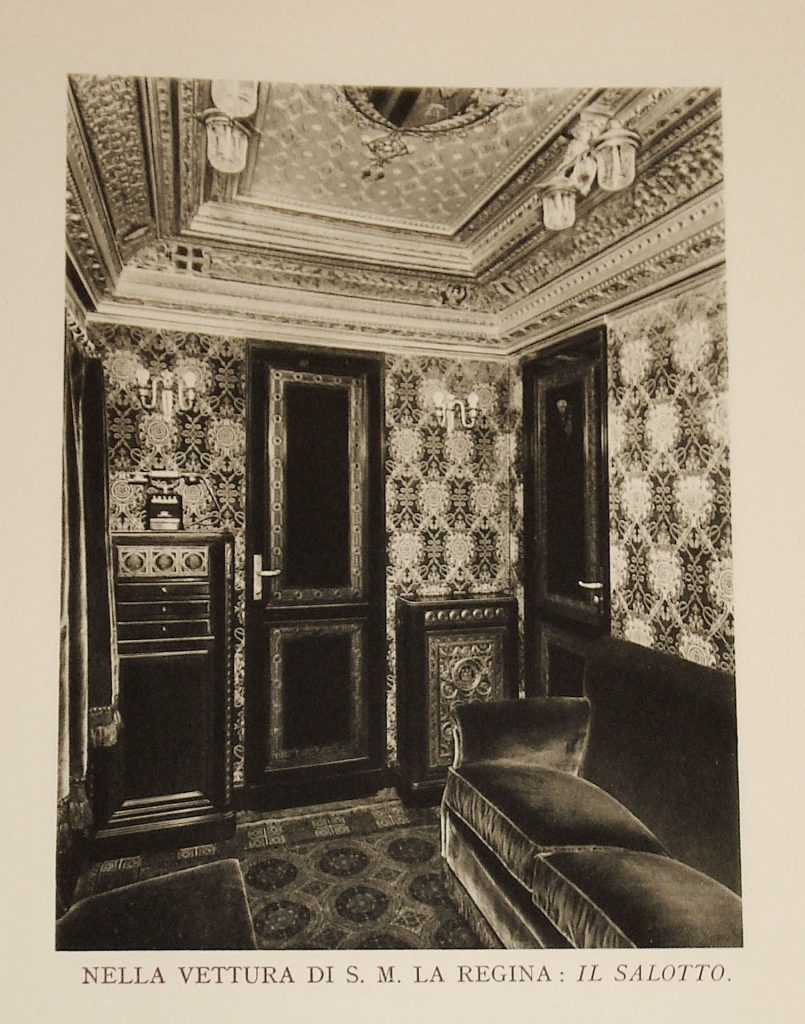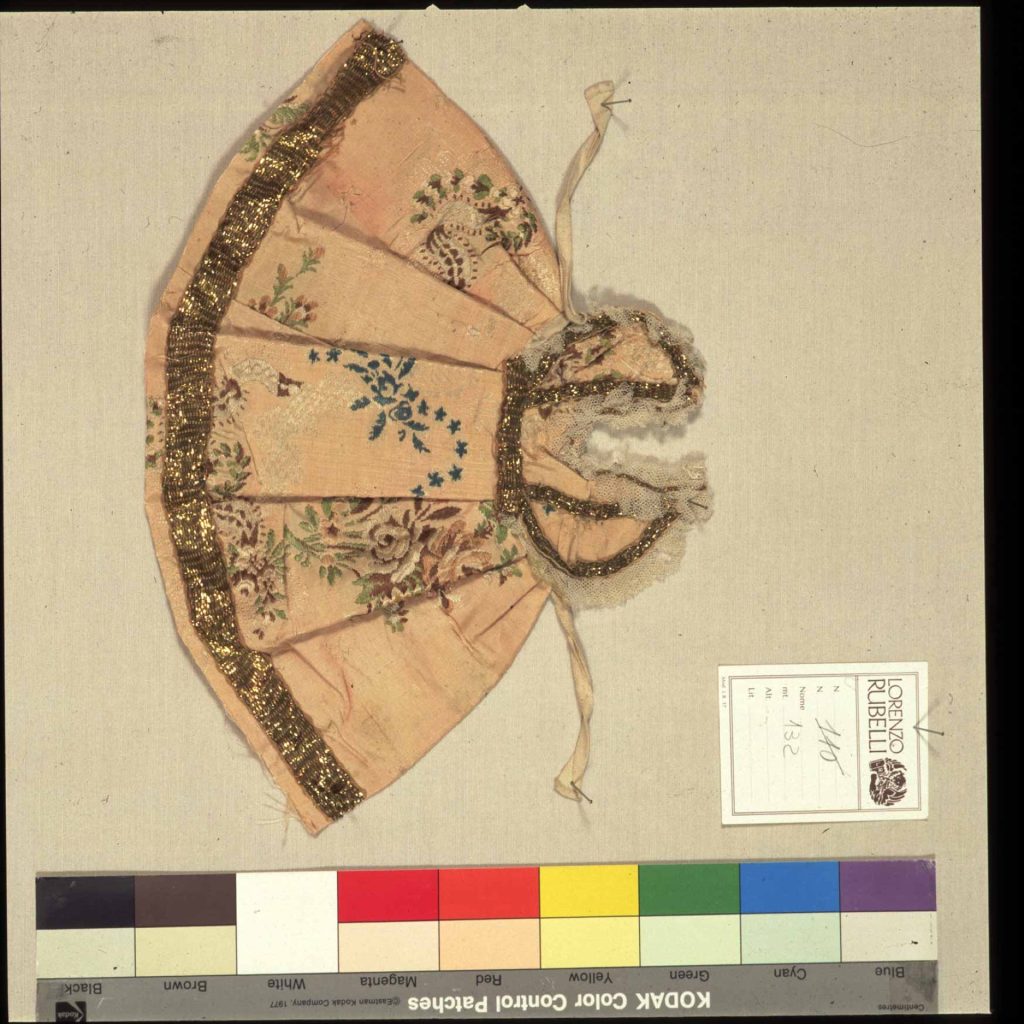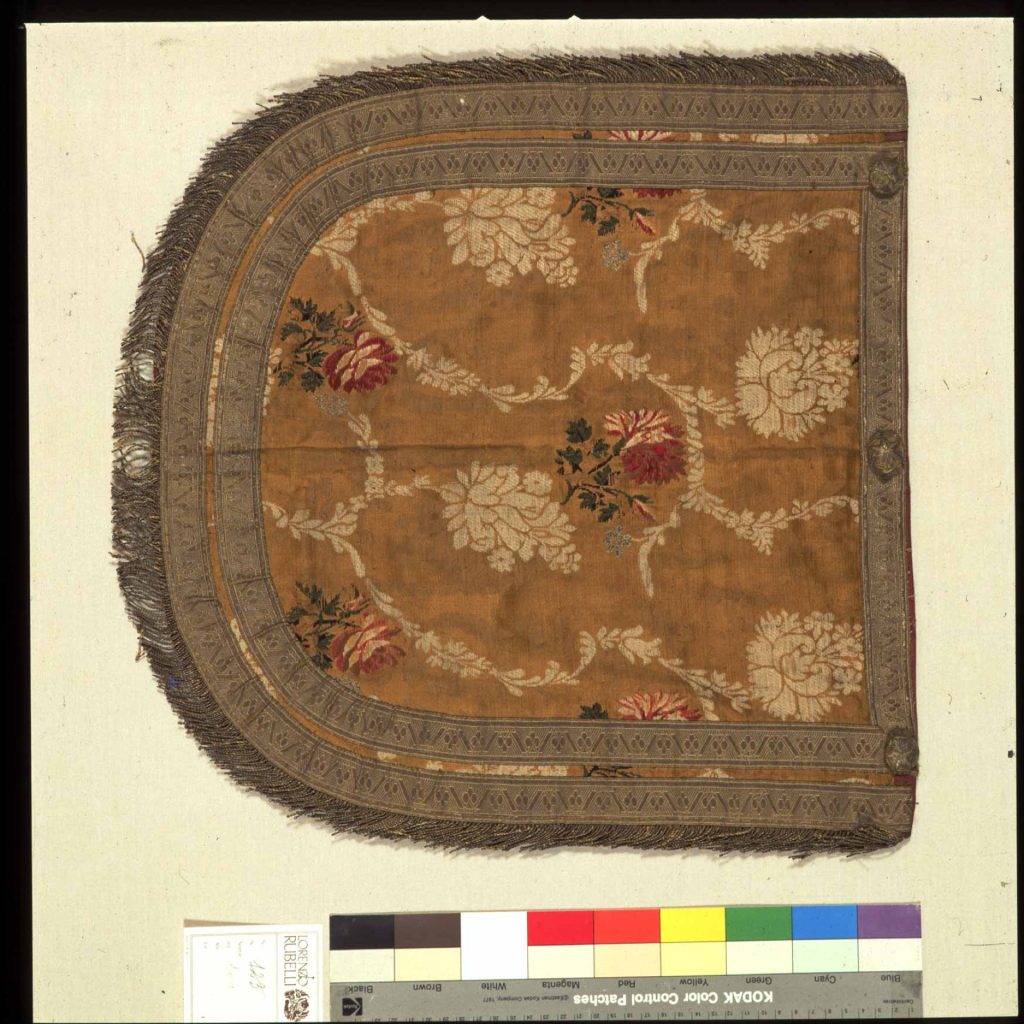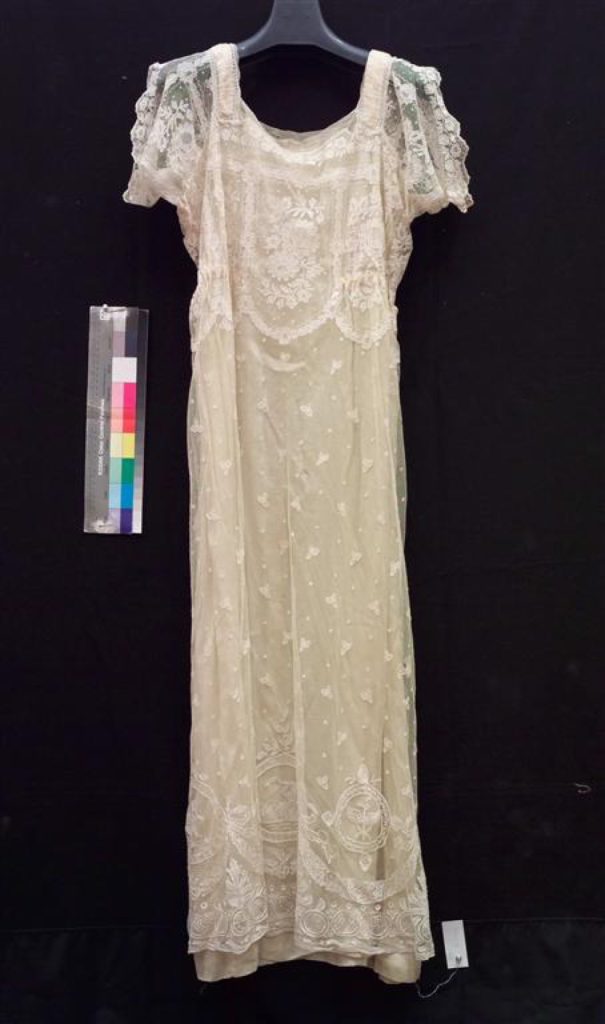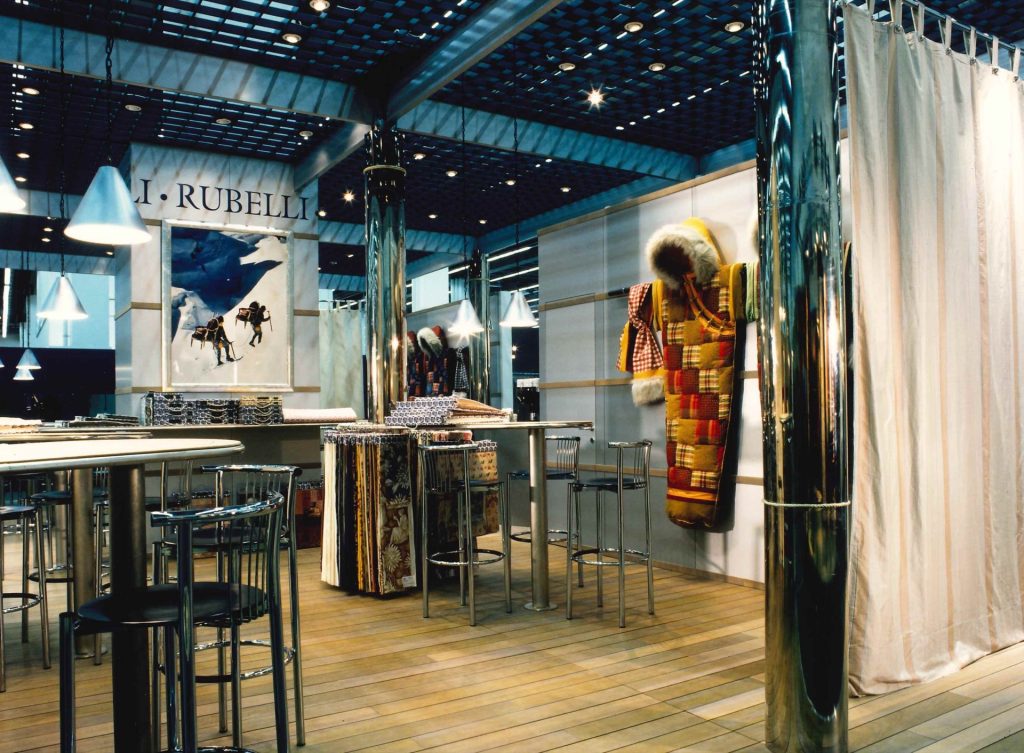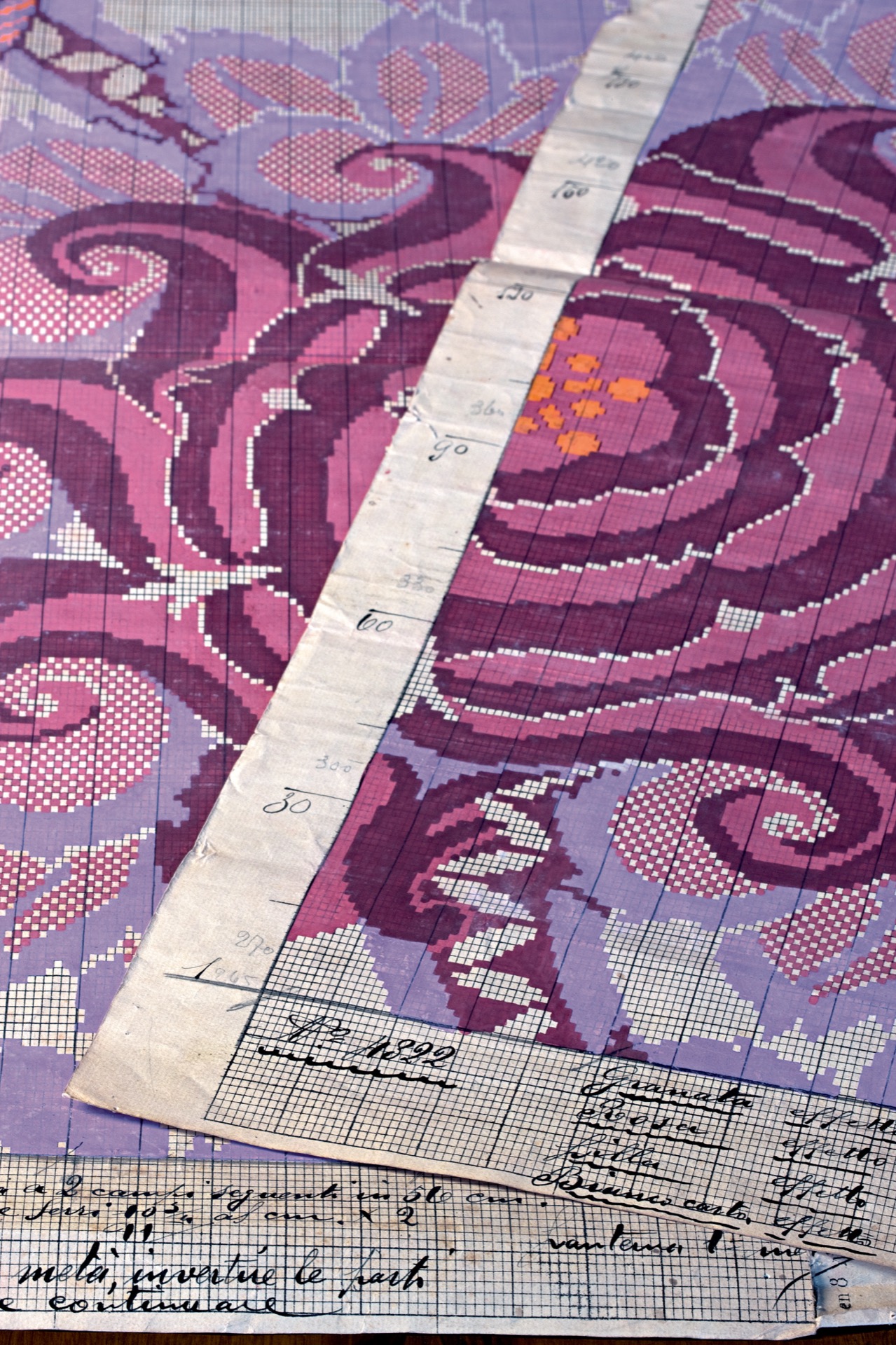HERITAGE
“The laws of colors are inexpressibly beautiful, precisely because they are not due to chance.” – VINCENT VAN GOGH
The Rubelli Historical Archives consist of more than 50,000 textile artifacts including samples, cloths, historical measuring tapes, mallets, fabric samples, and trimmings, accompanied by more than 1,000 weaving patterns and preparatory drawings. The archives, together with an extensive collection of documents (letters, registers, accounting records, etc.) and photographs, document the company’s activities from its foundation in 1889 to the present day.
Collections and Fabrics
One of the most prestigious collections in the Rubelli Historical Archives is the Velvet Collection, consisting of hundreds of Venetian “soprarizzi” velvets redesigned and reproduced in the 1920s.
The collection is a testament to Rubelli’s excellence in the reproduction of the 16th century velvets that made Venice famous throughout the world.
Alongside the replicas of the past, Rubelli’s ability to embrace new stylistic impulses is demonstrated by his collaboration with illustrious artists of the first half of the 20th century: Guido Cadorin, Vittorio Zecchin, Gio Ponti, Umberto Bellotto, and Alfredo Carnelutti.
The Foundation also has a Collection of Purchases, the result of a wise policy adopted by Alessandro Favaretto Rubelli starting in his first years in business. This collection includes more than 3,000 draperies, cloths, fragments, fabrics for liturgical decorations, period costumes, sample books, and more than 13,000 fabric samples coming from textile factories no longer in use. Dating from the 15th to the 20th centuries, the collection bears witness to the history of fabrics not only from Europe, but also from the East, the pre-Columbian period and Africa.
FABRICS
The archive of the Rubelli weaving mill contains more than 50,000 fabric samples. It’s a picture of uninterrupted activity spanning from the beginning of the last century until today.
One of the most prestigious collections in the Rubelli Historical Archives is the Velvet Collection, consisting of hundreds of Venetian “soprarizzi” velvets redesigned and reproduced in the 1920s.
The collection is a testament to Rubelli’s excellence in the reproduction of the 16th century velvets that made Venice famous throughout the world.
Alongside the replicas of the past, Rubelli’s ability to embrace new stylistic impulses is demonstrated by his collaboration with illustrious artists of the first half of the 20th century: Guido Cadorin, Vittorio Zecchin, Gio Ponti, Umberto Bellotto, and Alfredo Carnelutti.
The Foundation also has a Collection of Purchases, the result of a wise policy adopted by Alessandro Favaretto Rubelli starting in his first years in business. This collection includes more than 3,000 draperies, cloths, fragments, fabrics for liturgical decorations, period costumes, sample books, and more than 13,000 fabric samples coming from textile factories no longer in use. Dating from the 15th to the 20th centuries, the collection bears witness to the history of fabrics not only from Europe, but also from the East, the pre-Columbian period and Africa.
FABRICS
The archive of the Rubelli weaving mill contains more than 50,000 fabric samples. It’s a picture of uninterrupted activity spanning from the beginning of the last century until today.
Drawings and Weaving Patterns
There are also hundreds of sketches and rough designs for fabrics from the late nineteenth century to the 1950s, and thousands of “weaving patterns”: the technical papers that transfer the design to hand-painted squares of paper. This includes everything from sketch to weaving pattern and finished fabric; thanks to the materials kept in the archives, it is possible to recreate the entire creative and manufacturing path for many of the fabrics in the collection.
Documents
The documents in the Rubelli Historical Archives tell the story of what has characterized Italian entrepreneurship for more than a century: the recovery of tradition in line with attention to the contemporary, both factors of growth and innovation.
Letters, notes, invoice books and customer lists from the 1920s to the present day, all of which are essential to reconstructing the history of the company and the economic and social development of the period.
The archival series relating to orders from the Royal House of Savoy, the furnishing of cruise ships and the opening of stores in Venice, Milan and Florence are a testimony to the company’s long-standing high-profile commissions.
Library
The collection of fabrics is complemented by a vast collection of antique and prestigious books, the result of the Venetian businessman’s passion for the history and guidebooks of his native city. In addition, the company library, specialized in textiles and art in general, provides a solid base for historical research and the study of styles throughout history.
